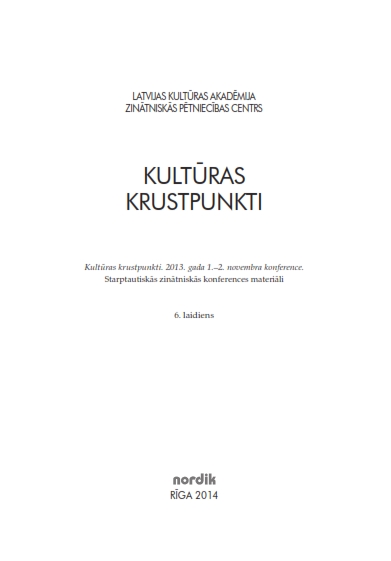Vidzemes Svētupe vietu stāstos
The River Svētupe in Place Narratives in Vidzeme
Author(s): Ieva VītolaSubject(s): Cultural history, Local History / Microhistory, Oral history, Lexis, Historical Linguistics
Published by: Latvijas Kultūras akadēmija
Keywords: the River Svētupe; toponyms; place narratives; cultural and historic heritage;
Summary/Abstract: This publication explores the features of identity of the River Svētupe in Vidzeme by analysing the place narratives in relation to the Svētupe as a river and a place name that occurs in both microtoponyms in the Svētupe flow and on its banks. The place narratives of the River Svētupe and its banks are evidence of the local history and daily scenes on the banks of the river at various periods of time. The written oral testimonies reveal the functions of the river and its use by the local inhabitants both historically and at present. In such a context, the River Svētupe ismainly regarded and utilised for daily and household needs (water, collection of herbal teas, extraction of treatment clay, spending leisure time, hay making, etc.). In the opinion of the local people the Svētupe is recognised with the help of the names of the constructions on the river banks (the mill, the bridge, houses) or the names of river bays (usually they are named after the closest landowners or houses) or the peculiarities of the river flow – deeper places or the so-called pits where it is impossible either to fish or to swim. The microtoponyms of the Svētupe and its banks are entwined with place narratives of personal experience and they are related to the history of the district. The Svētupe is not just a geographical place, a hydrological site; it is a significant part of the space that includes individual and collective experience and refers to both the emotional and the social dimensions.
Journal: Culture Crossroads
- Issue Year: 6/2014
- Issue No: 1
- Page Range: 52-65
- Page Count: 14
- Language: Latvian

